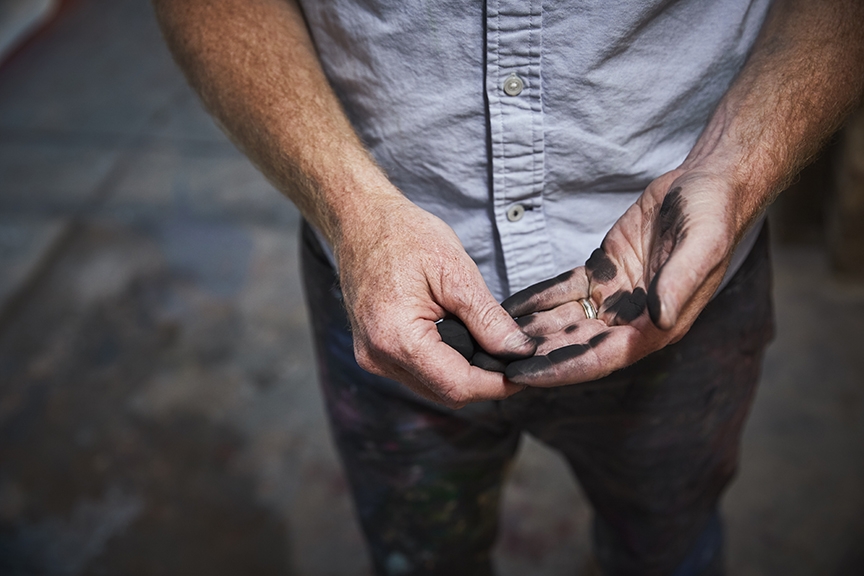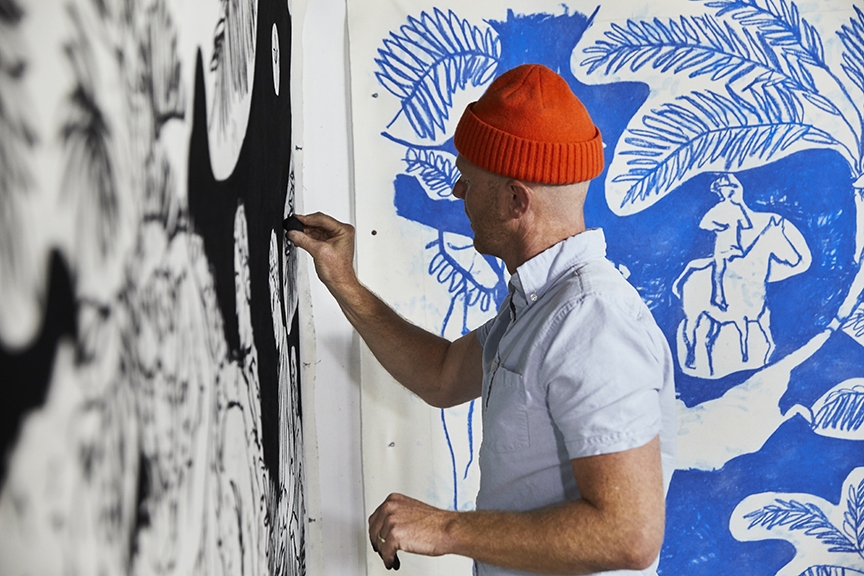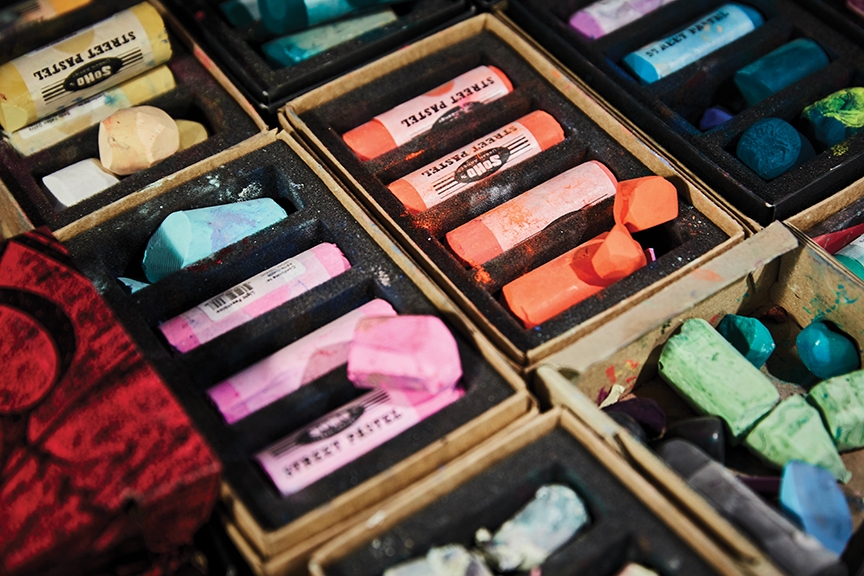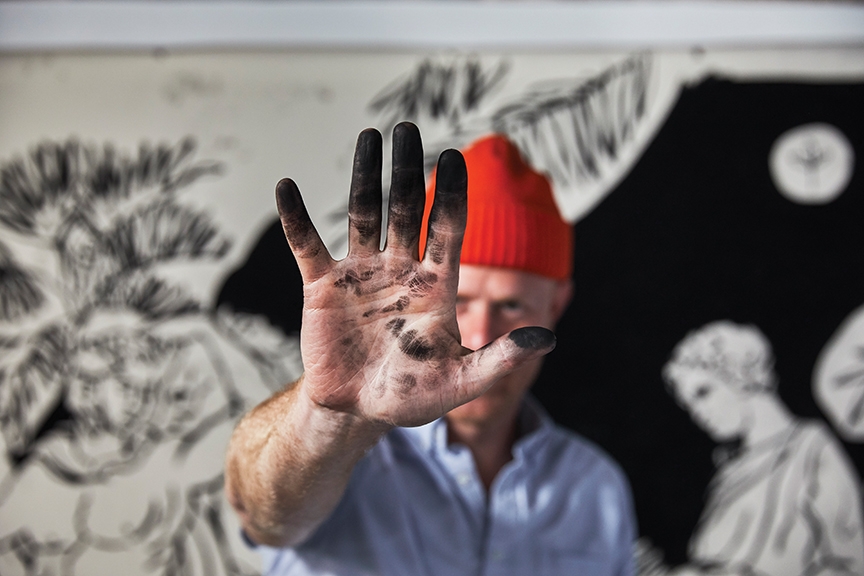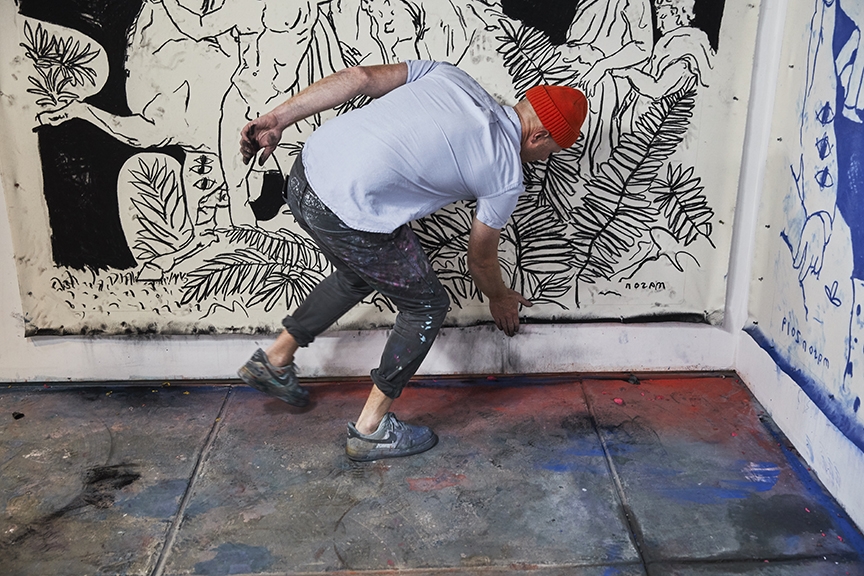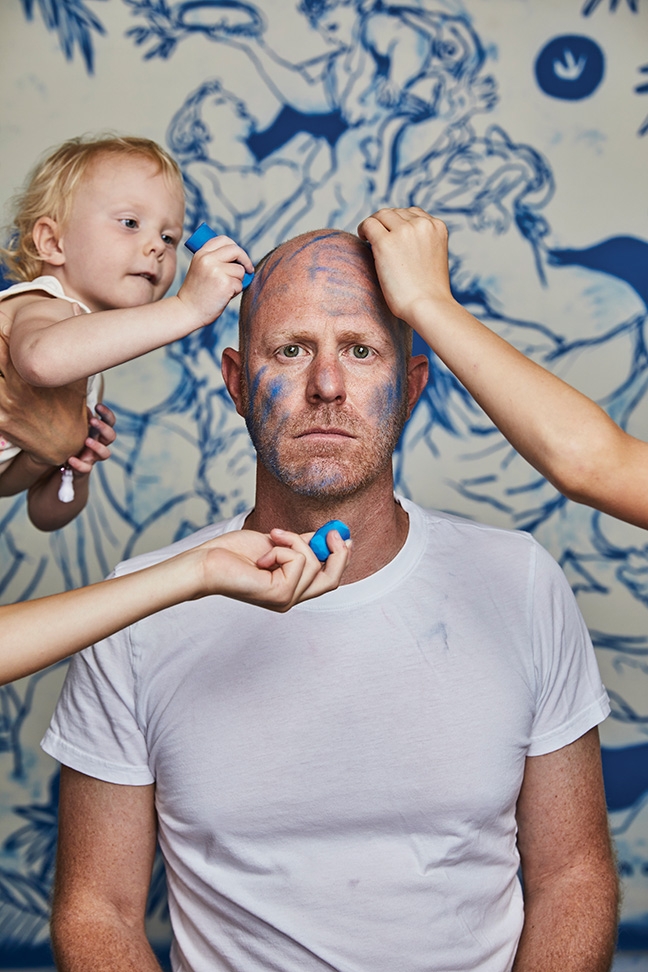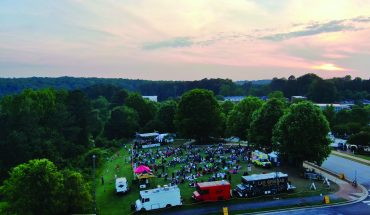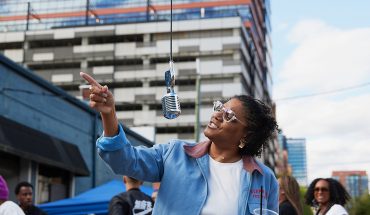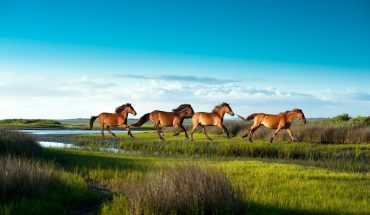Raleigh artist Corey Mason lures the eye with boldly-rendered canvases pulled from classic motifs.
by Samantha Gratton | photography by Geoff Wood
Click to expand photo and view slideshow.
Massive canvases fill the basement studio of Corey Mason’s home in Cameron Village when I step inside: Three paintings are pinned up on the white walls, one’s laying flat on the floor, a small pile of canvases are rolled up on the ground and several older pieces are tucked in a corner. Despite their impressive scale—many of them are bigger than he is—the walls almost look bare in comparison to how they have looked in the past several months, as Mason worked long hours into the night while preparing to show at the prestigious Marfa Invitational art fair in Marfa, Texas, as well as gallery shows in Palm Beach, Florida and Brescia, Italy. His most recent work features oil pastel on reverse-primed canvases, using bold colors like Prussian blue, neon pink and brick red to depict stylized renderings of ancient vessels, pastoral motifs and familiar symbols.
Although Mason’s art work has an international reach, life as an artist is relatively new to him. The real estate developer and former landscape architect sold his first few pieces in 2014 when art curator Marjorie Hodges (who now works at the North Carolina Museum of Art) saw his collection of abstract paintings hanging in BREW Coffee Bar and acquired it on behalf of Citrix. At the time, he painted just when the urge happened to hit, often outside in the driveway or in a friend’s garage. “I remember Marjorie saying, ‘You could have a really good career as an artist.’” says Mason.
Mason was born and raised in Texas and had always drawn as a kid. He went to Texas A&M University and received a degree in landscape architecture. He says he didn’t start creating art until 2009 while working in Anchorage, Alaska. “My mother-in-law really encouraged me to do it. She was a teacher for 30-something years, and I think she has a talent for recognizing the core of who people are. She would constantly call me an artist,” Mason says. “So I was like, if I’m an artist, maybe I should start doing something.” As a refuge from the dark Alaskan winters, he began painting in his garage, watching how the paint froze on the canvas and reacted to the environment. When he moved to Raleigh in 2012, he continued to paint when he could, but only as a hobby. After showcasing at BREW, he says, not much happened for a few years aside from selling a few pieces locally. Making art simply continued to be a creative release, and he created more simply because he loved it and wanted to get better. Most of his pieces were abstract then, thick lines and strong blocks of color, but he began to feel like there was not a lot of substance to the style.
“I don’t know that art needs to be understood, but maybe I wanted to understand it more,” says Mason. So he started to make the lines thinner and more figurative until it evolved as a representation of real-world imagery and classic icons. This new style of art, he feels, better communicates thoughts and ideas while showing a point of view.
The pots, scenes and iconography that show up in his paintings harken back to common motifs from the past, but Mason adds a youthfulness through the bold strokes and color palette. “I’m just interested in something that’s old meeting something that’s new,” says Mason. “How those collide is what I’ll probably continue to explore.” He draws inspiration from Roman, Egyptian, Italian and African art, but intentionally forms a “mishmash” of the various styles to create something new. Mason feels that these themes have a soul, and the fact that people are still interested in them hundreds or even thousands of years later confirms it. In 2018, the owners of Achenbach Hagemeier, a gallery in Düsseldorf, Germany, found Mason on Instagram and invited him to do his first show. He’d been using the platform to share his art with others, but didn’t expect it to lead to business. “With social media, I’ve learned it’s possible to have your artwork be seen, get noticed or be a part of the conversation outside of the art markets,” Mason says. “You don’t have to live in a big art city like New York, London or Paris to make connections, you can live wherever you want and be a working artist.”
That said, Mason makes a point to travel to New York at least twice a year. “You have to expose yourself to great art. Part of what I’ve been doing over the last several years is educating myself. I didn’t go to art school, so I’m learning from galleries and curators: ‘What is good? What makes it good? And why is it good? What is it trying to say? Or, why is it important?’” His work sold out at the gallery in Düsseldorf, which then opened up several more opportunities, including ones in Beirut and Brooklyn. For each show, he says, he tried to create art that reflected what was stirring in him, but also pieces that fit the feel of the city it was in, adjusting the subjects and color schemes to match its vibe. For Mason, art has to feel genuine, be interesting and come from the inside. “At the end of the day, you’re trying to just create a picture that stirs some emotion in somebody.”

